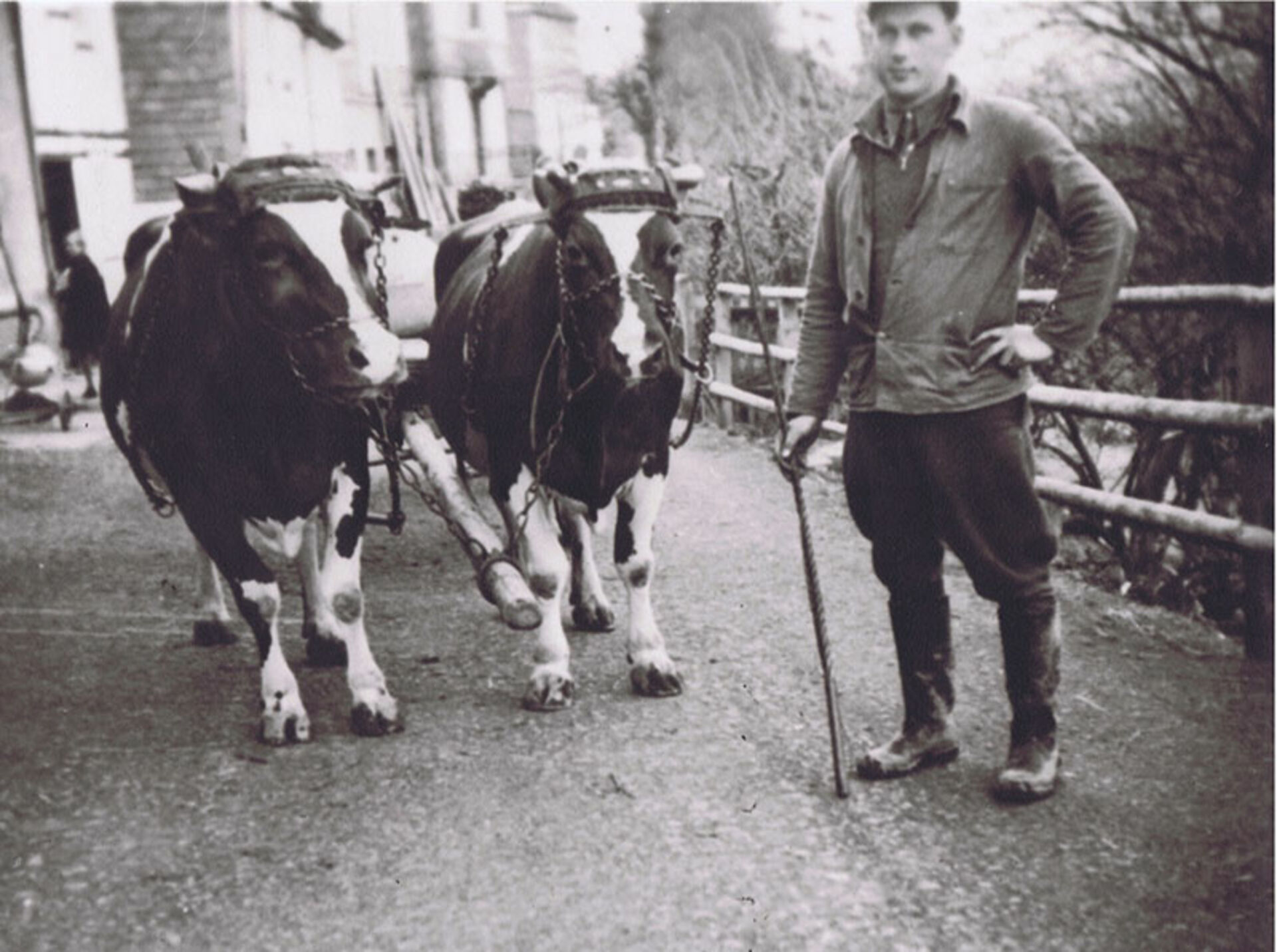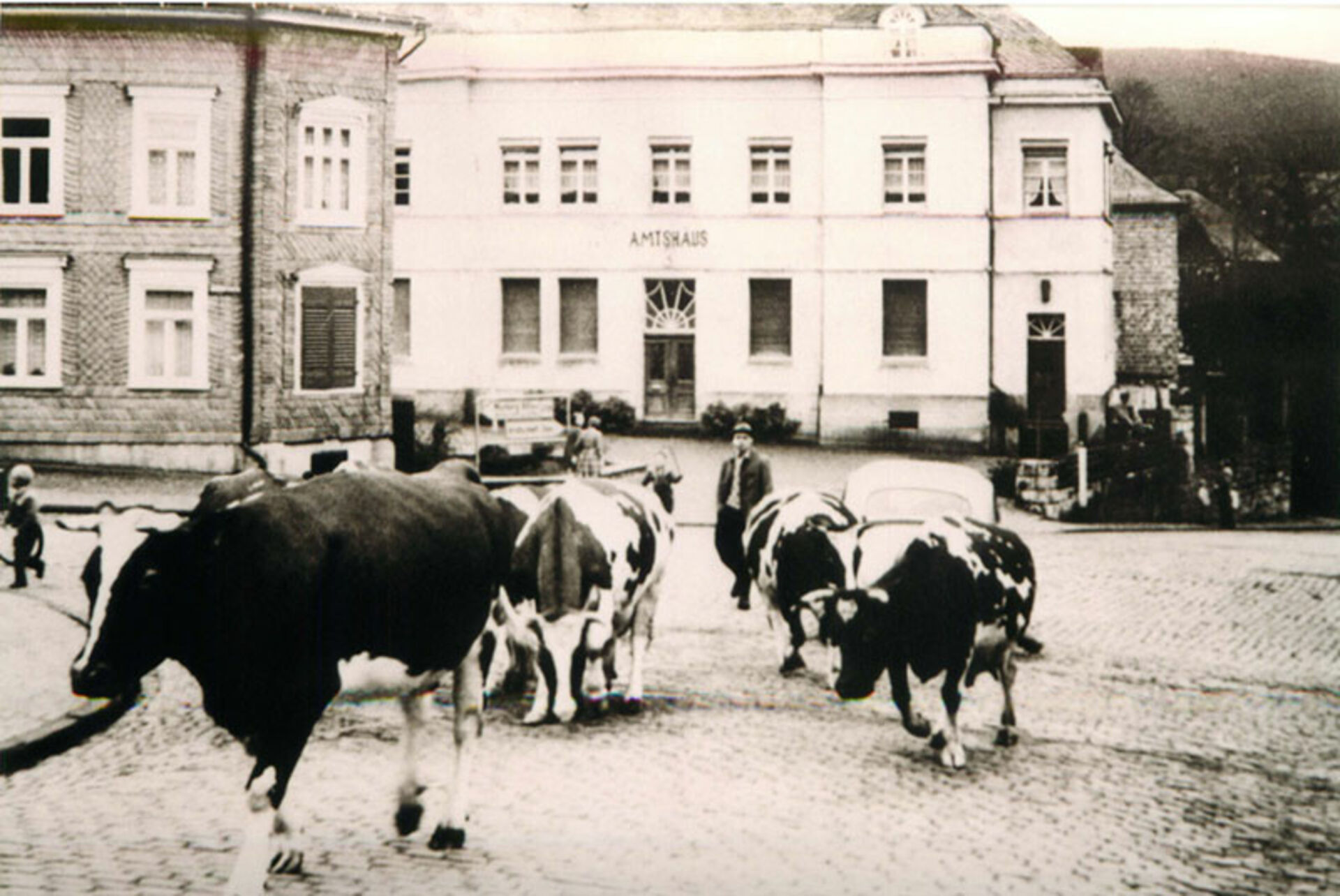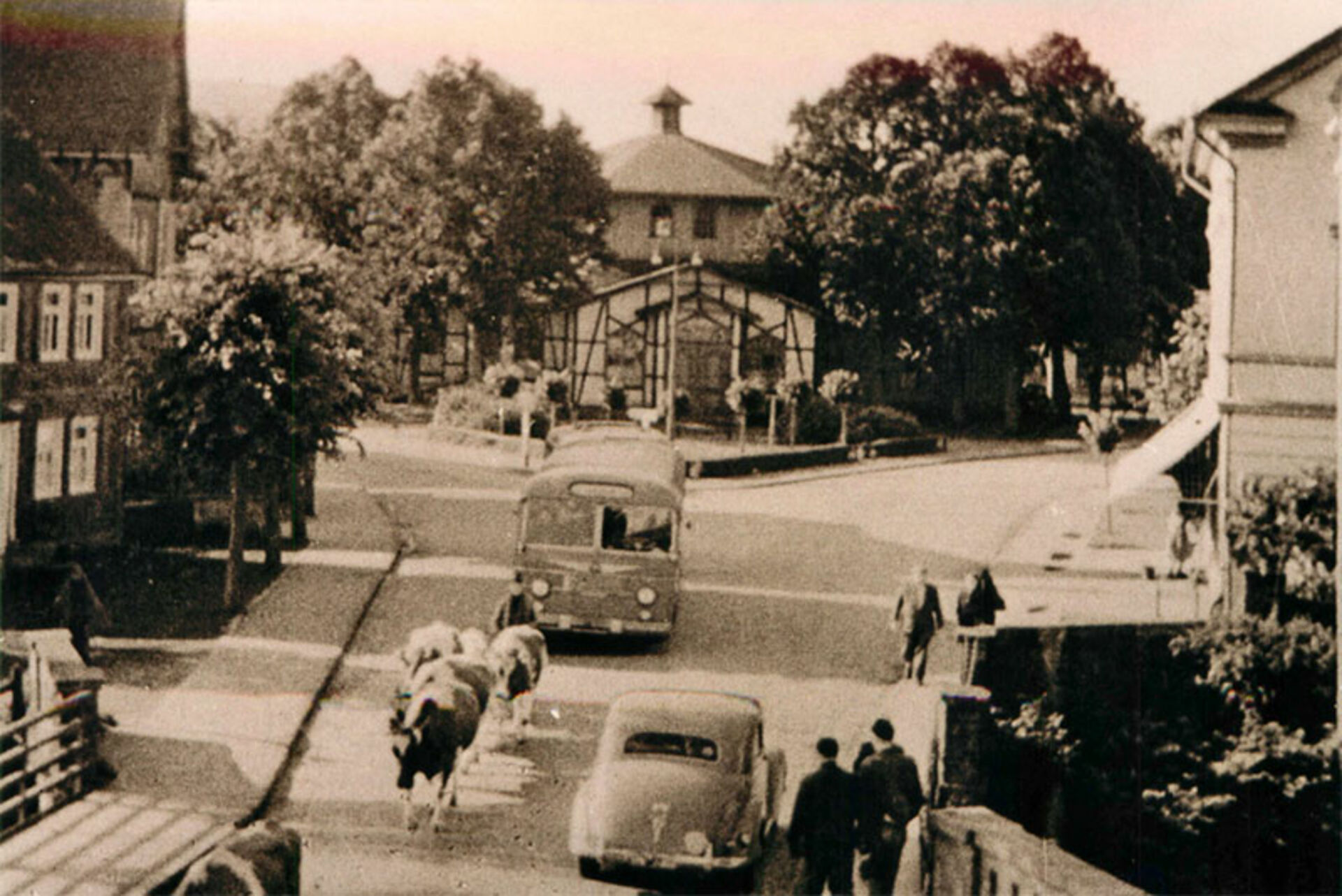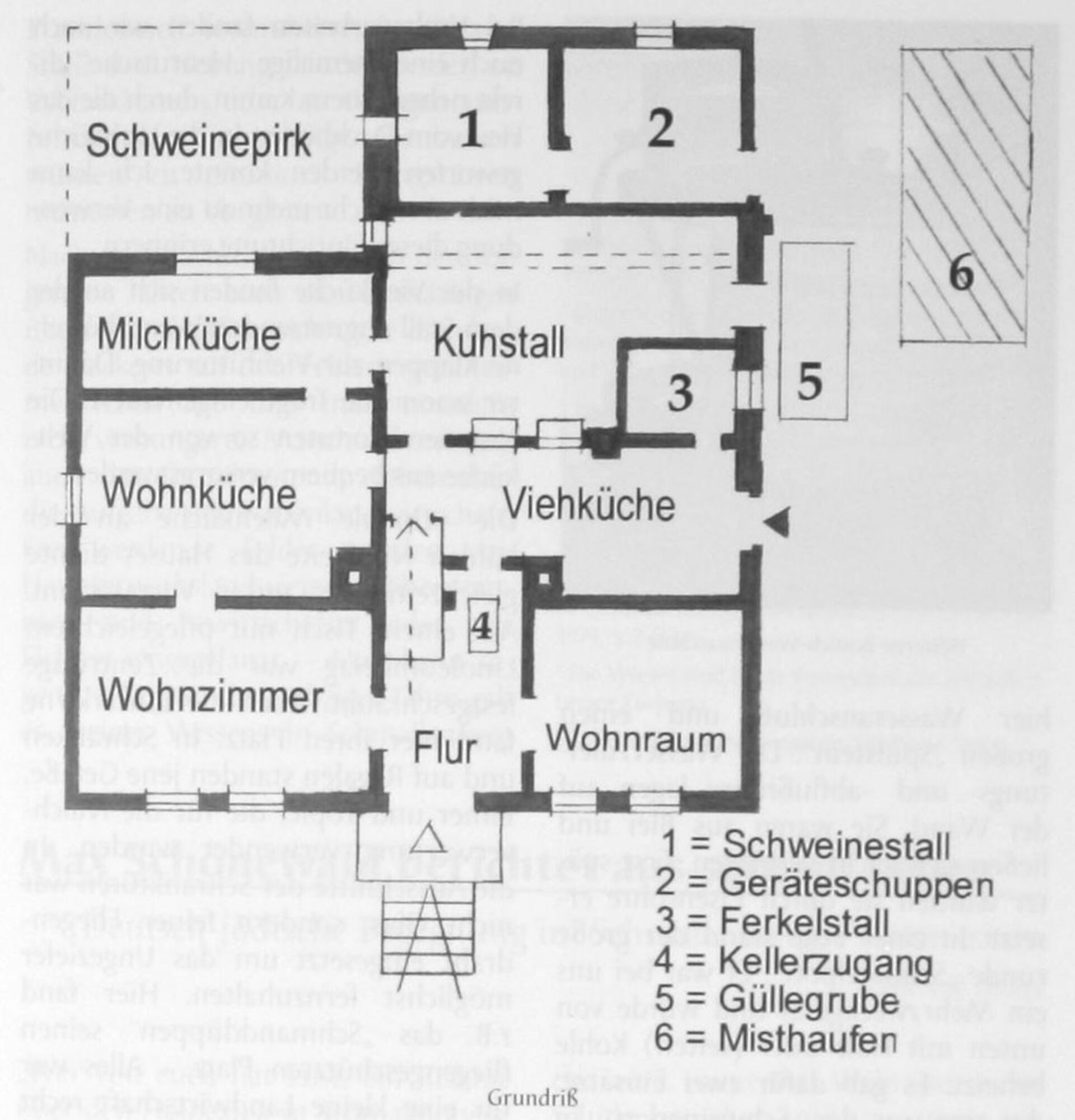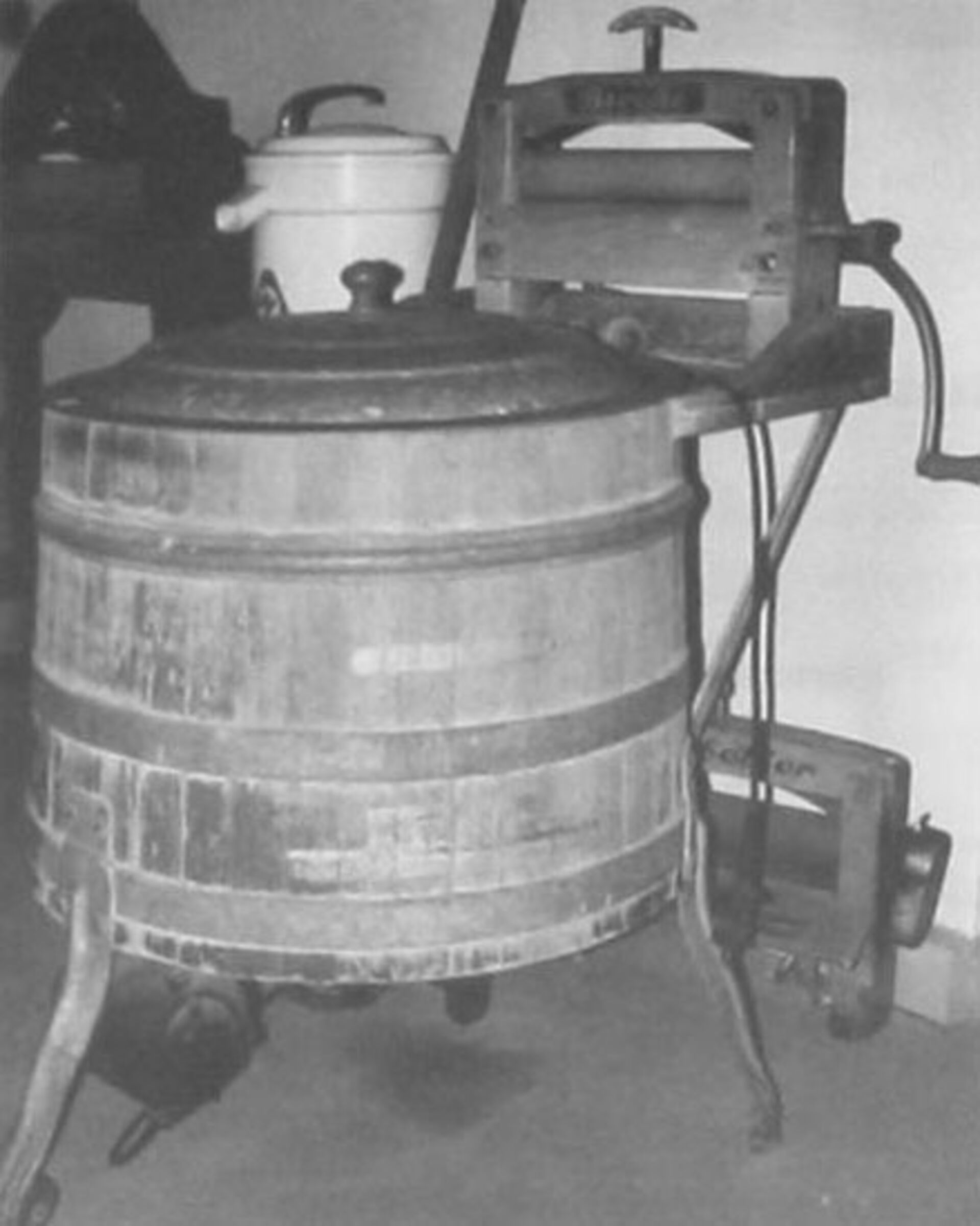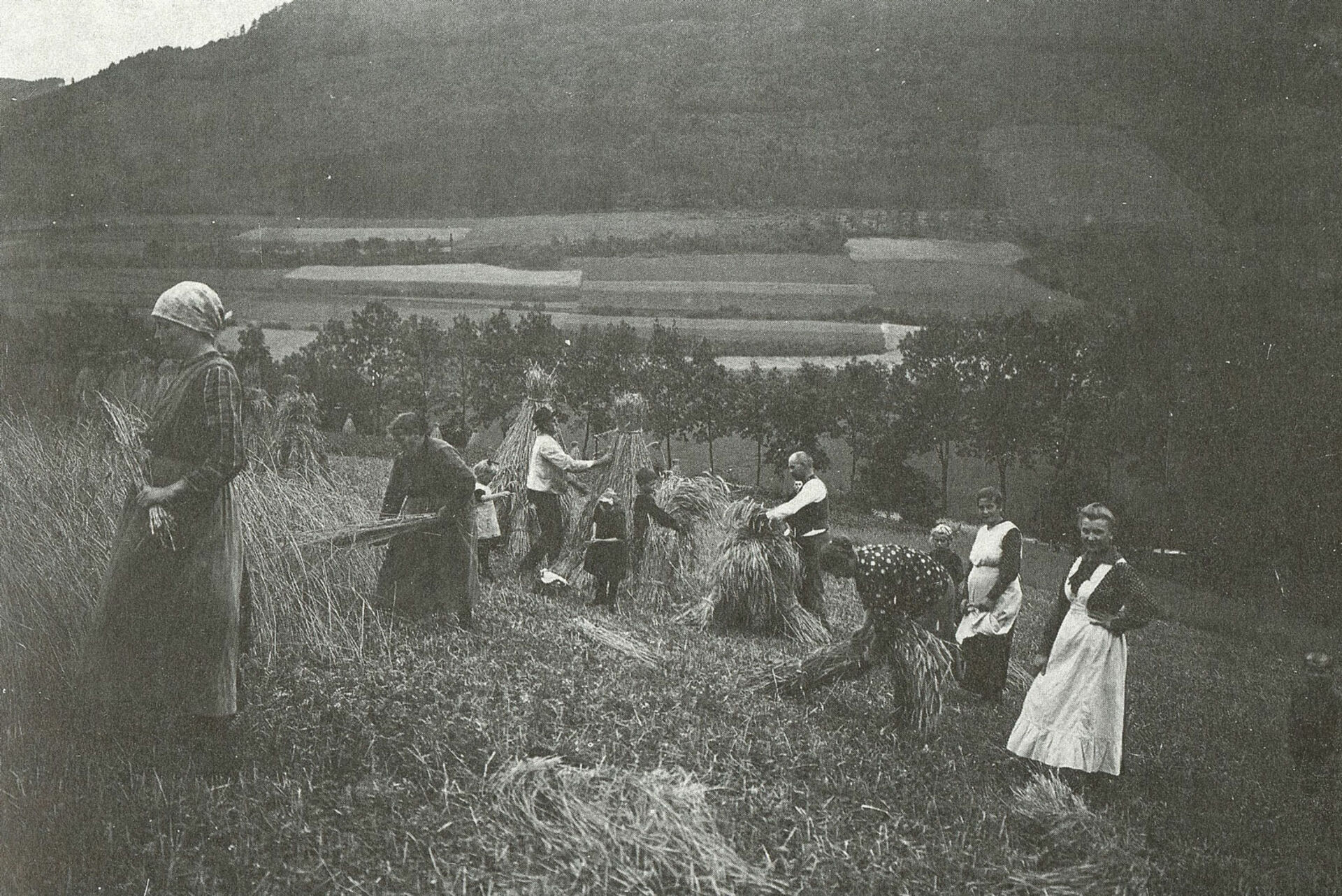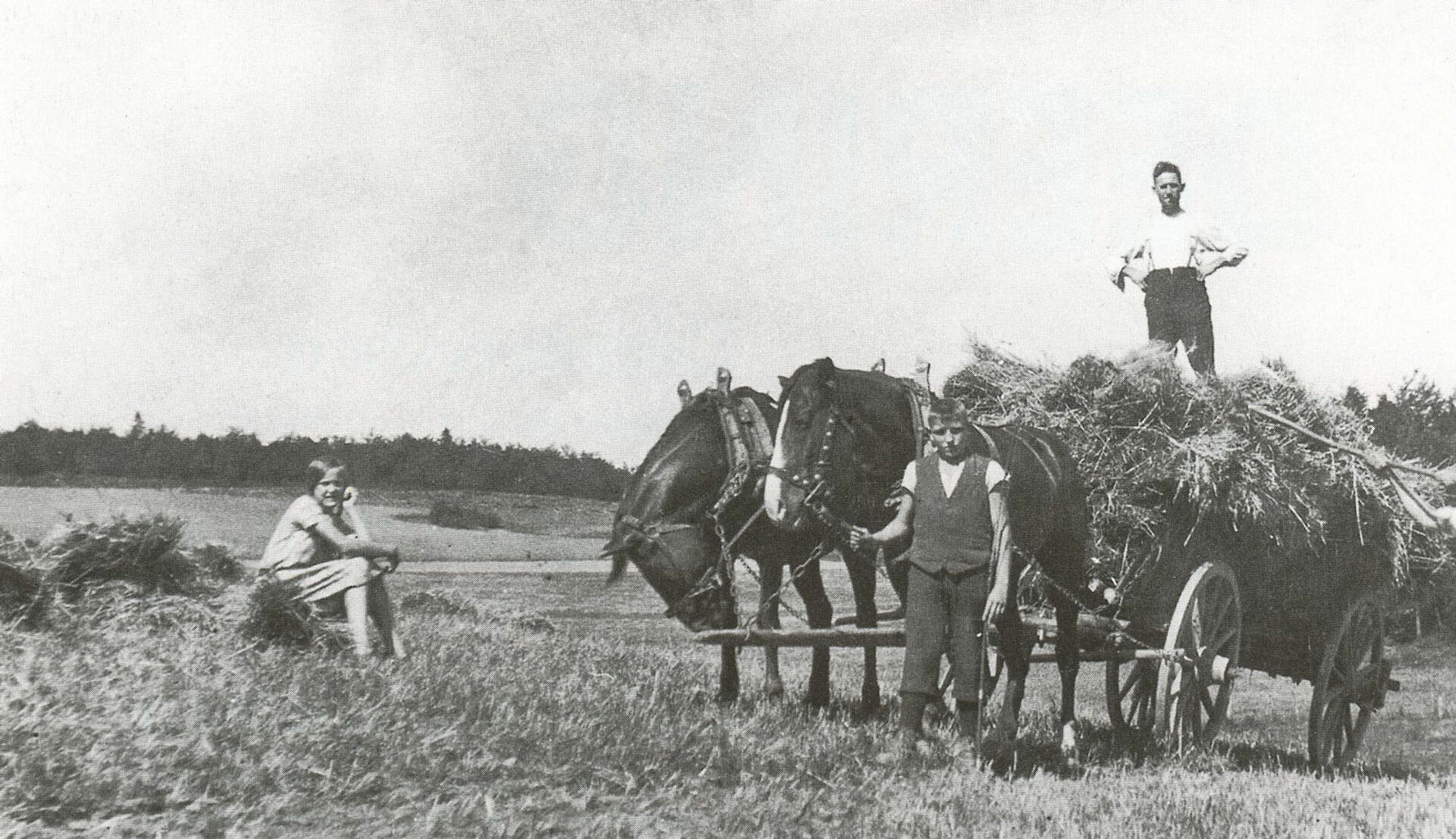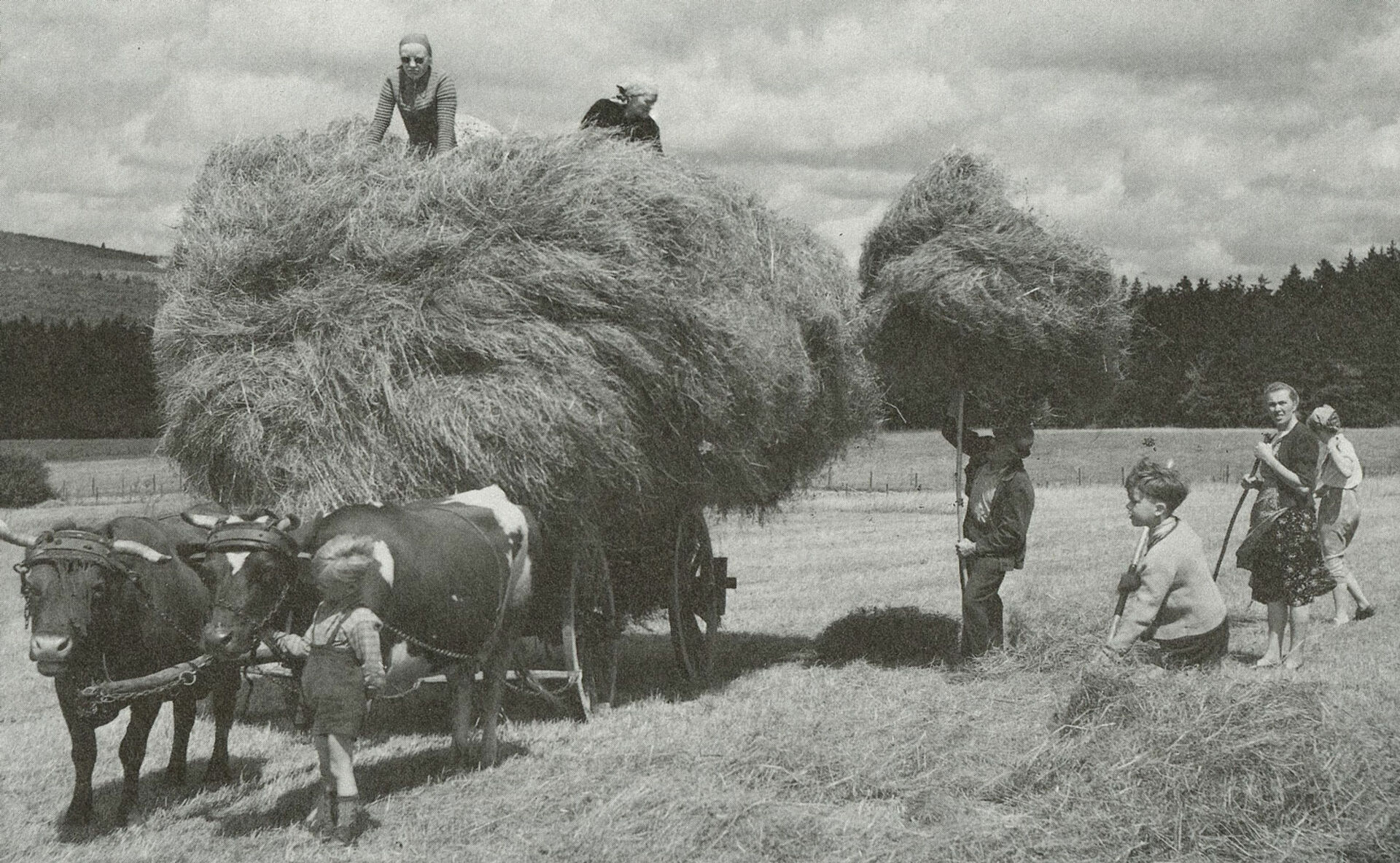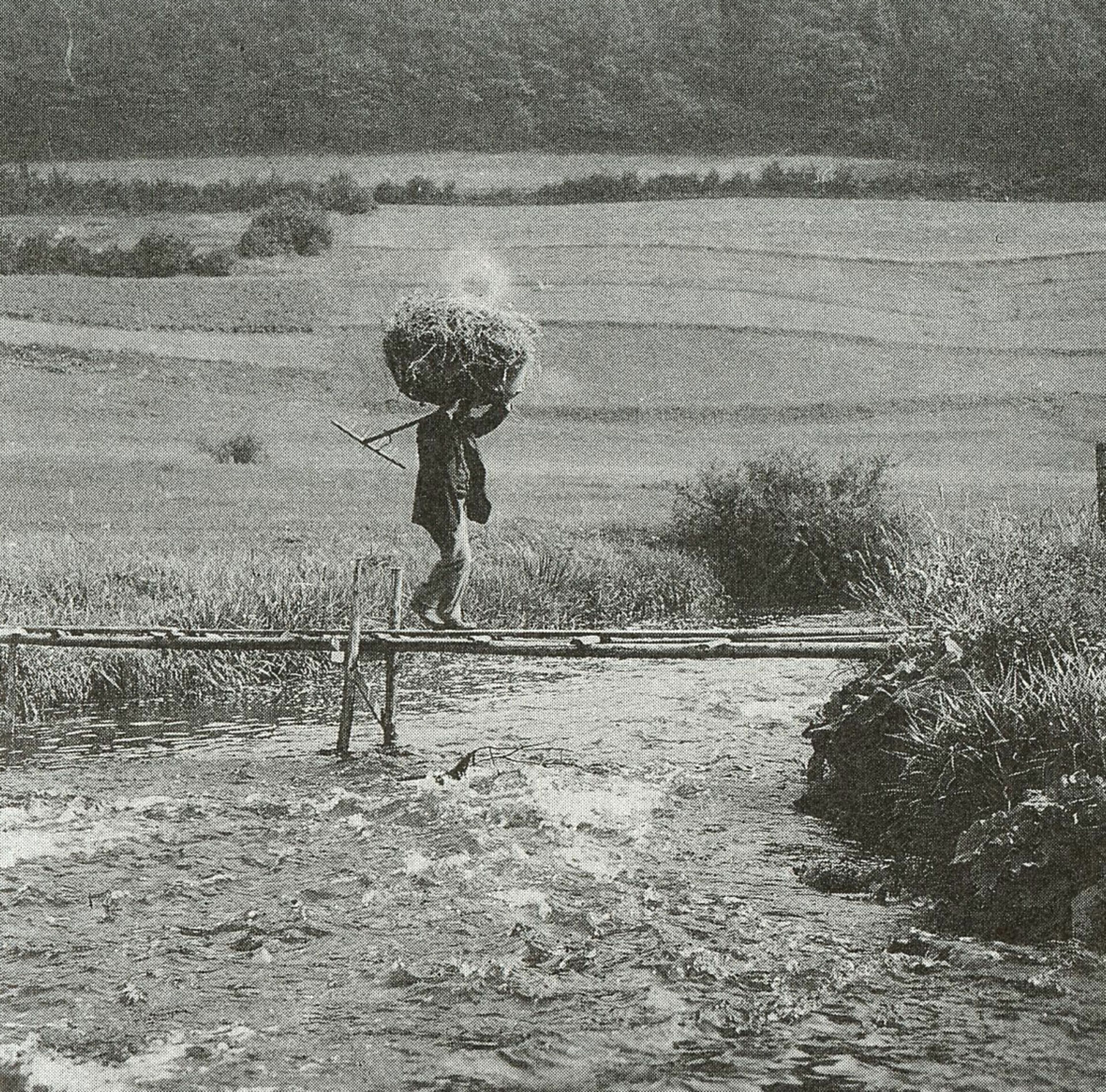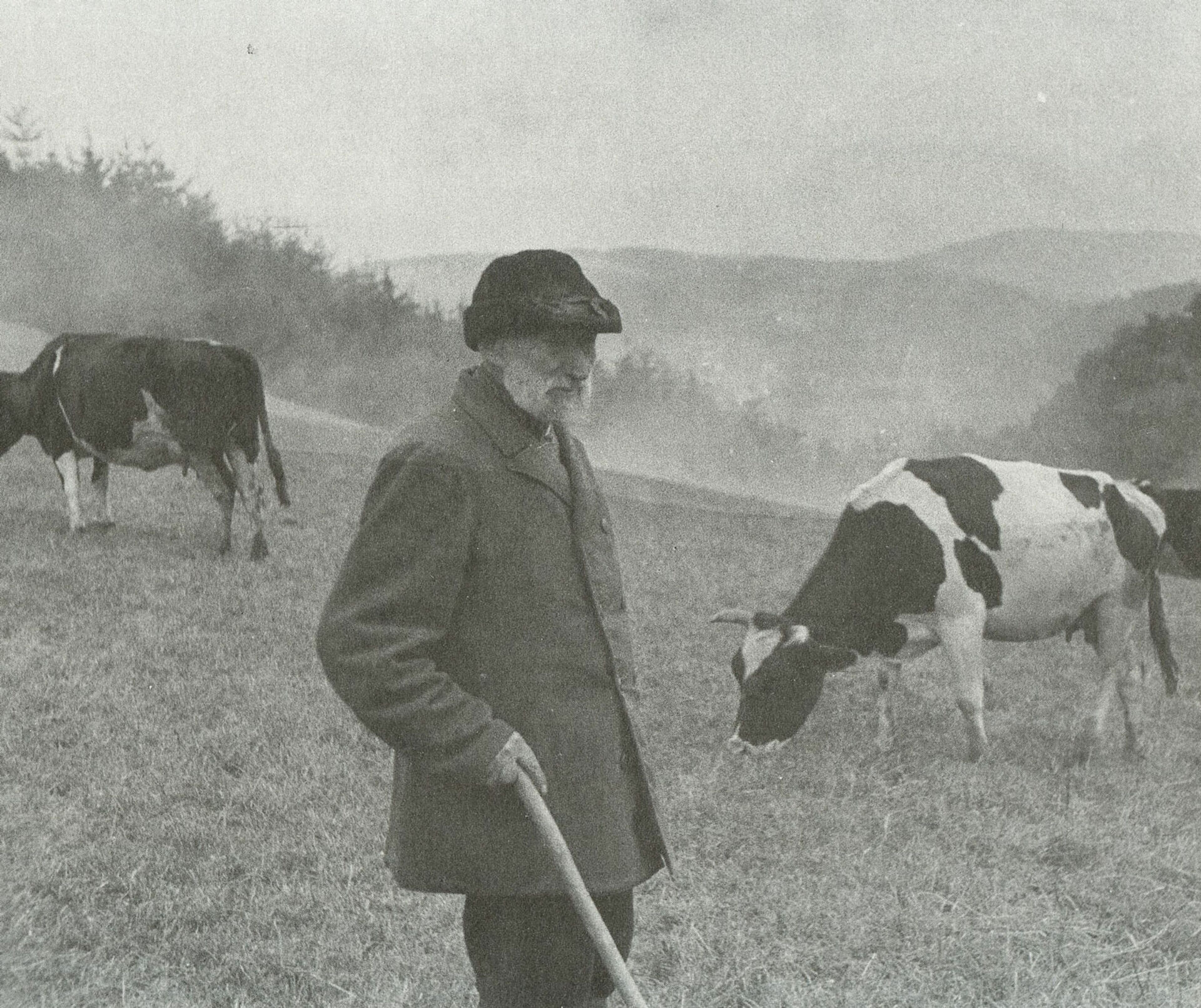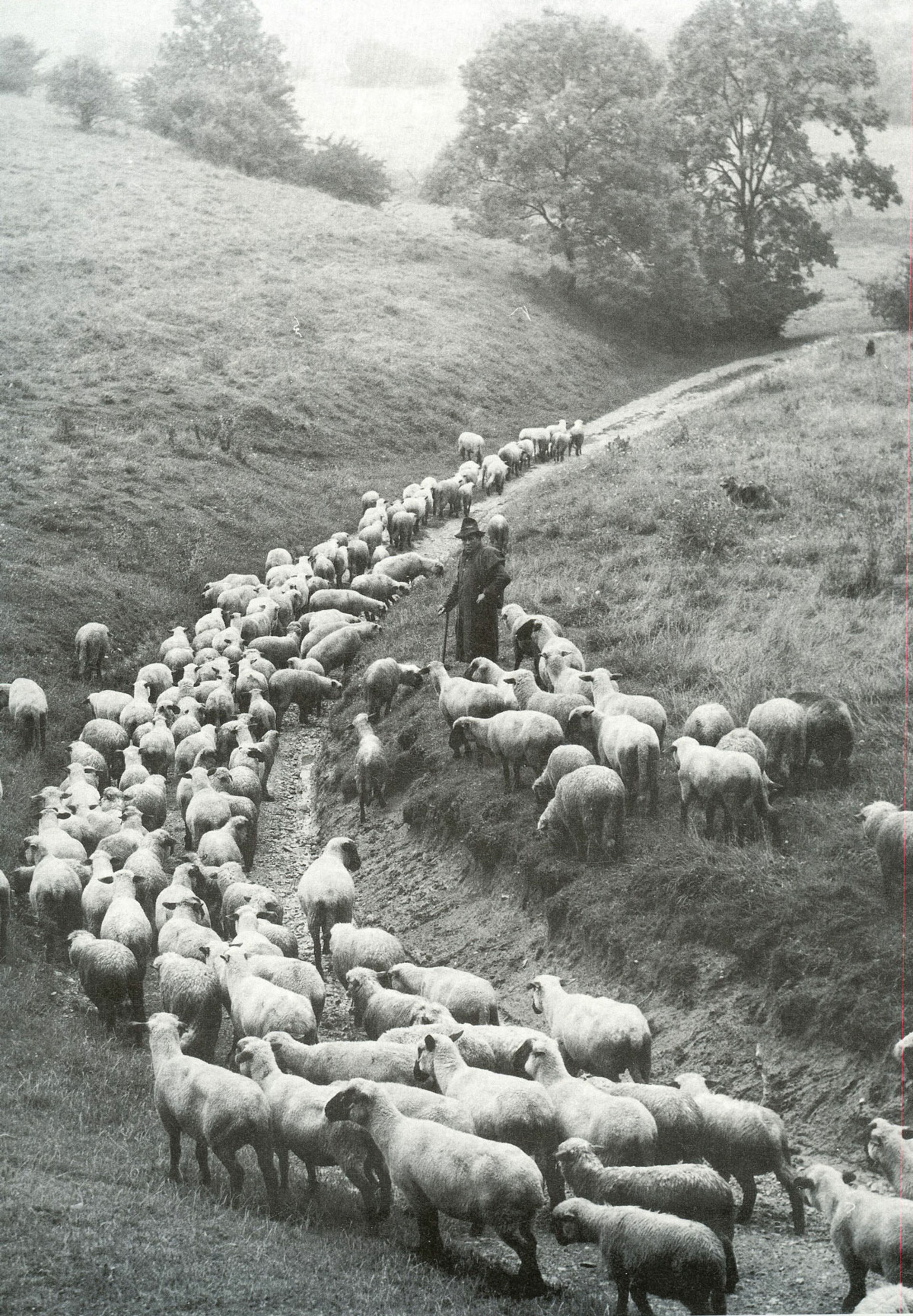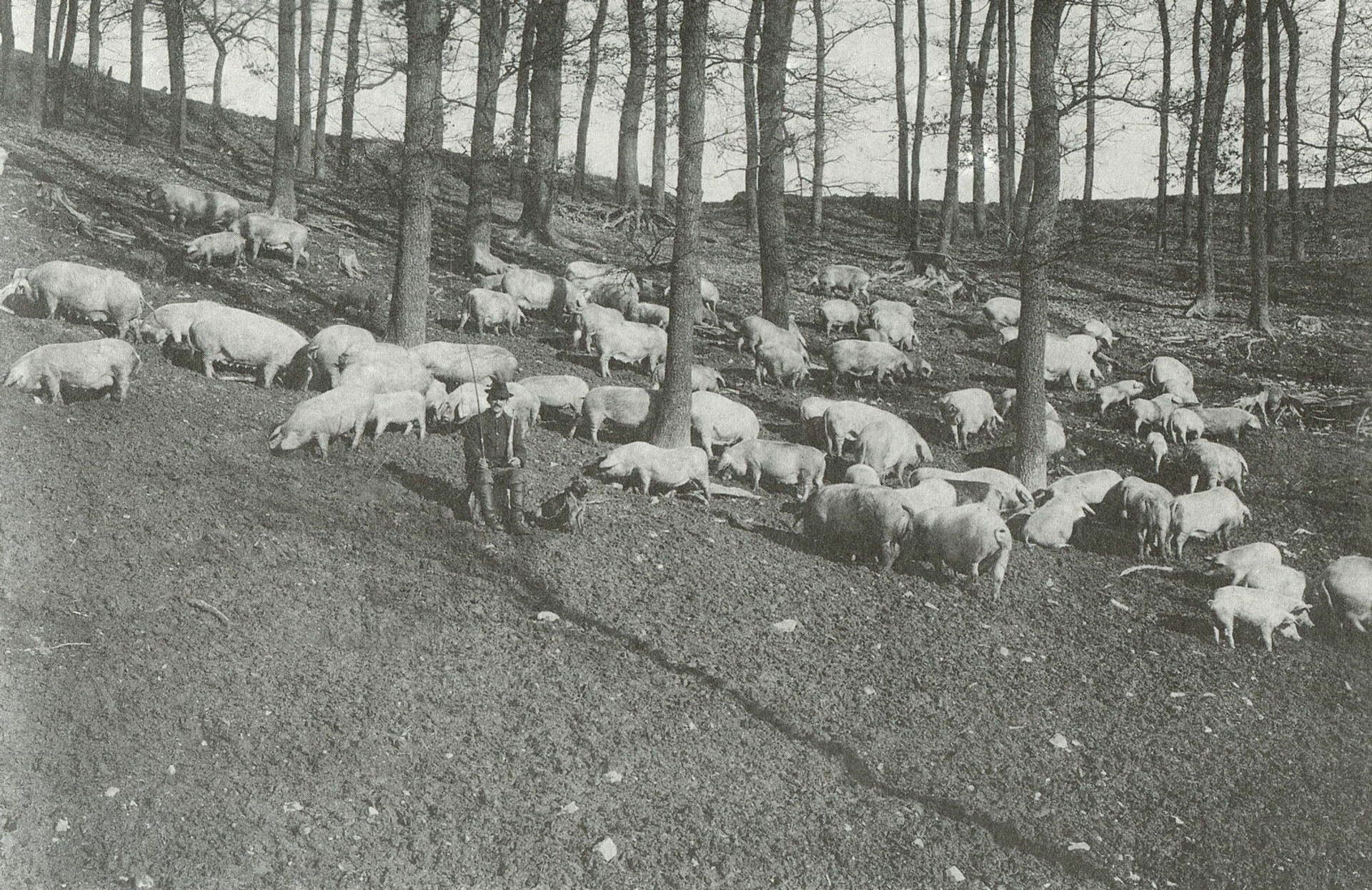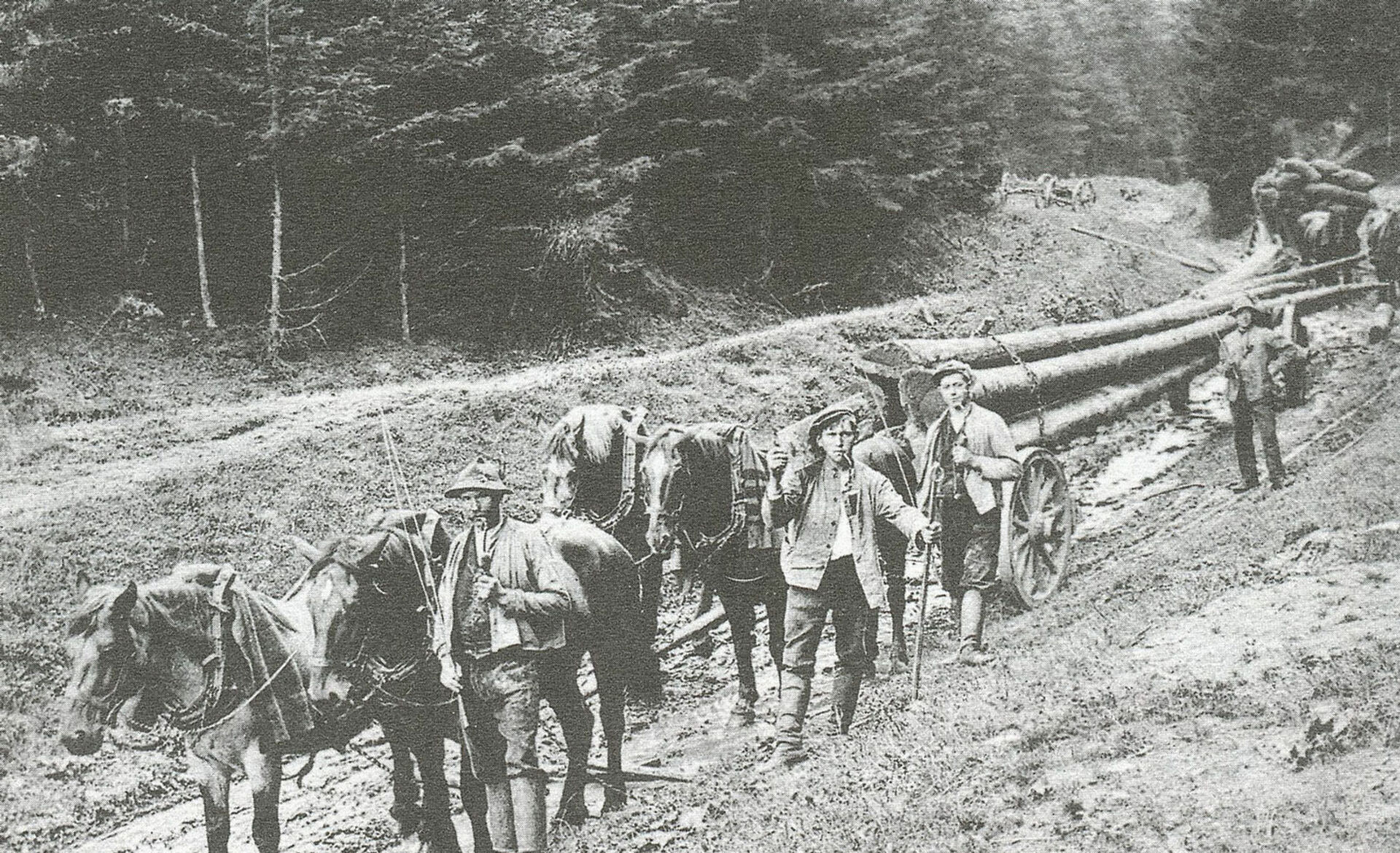The farming town
Space for people, cows & looms
Information point:
- Oststraße 31
Agriculture as a natural sideline
Schmallenberg was a farming town: agriculture shaped life and the townscape for centuries. Until well into the middle of the 20th century, farming was the main or secondary occupation of almost all families. The middle-class farmers lived in the town and cultivated their fields outside the town. They kept livestock at and in their houses in the town. The houses built after the town fire of 1822 took these conditions into account: they were built for people and animals alike. They were used to keep livestock, store hay, house farming equipment and produce and store butter and milk in a separate dairy kitchen. In front of and behind the house there was space for dung heaps and stacks of beech wood. Animal husbandry - cows, goats, chickens, rabbits and pigs were kept - guaranteed the basic supply of milk, butter, eggs and meat for the households.
Houses for people and animals
The house Oststraße 31 was built in 1822 as a five-axle, two-storey, eaves-standing house on a quarrystone cellar that belonged to the previous building. In 1822, a minimum distance to the neighboring building (Oststraße 33) of 20 feet (1 Prussian foot = 31.4 cm), around 6.3 meters, was prescribed. This gave each house a wide courtyard on one side, which could be used for agricultural purposes. On the other side, the houses were set close to the neighboring property.
The living quarters were located in the front part of the mostly two-story houses. Behind this was the section for the livestock. The walls of the basement were not made of oak beams, but made of stone. Only the living quarters had a cellar: potatoes and turnips were stored in these cellars. Hay was stored in the attic: as well as storing provisions, it also served as thermal insulation in winter. Between the stables and living quarters was the cattle kitchen, which had a water connection and a sink. The cattle kitchen was also home to the "pig or piglet pot", in which pig feed was cooked, sausages were boiled during slaughter or laundry was boiled. The dairy kitchen on the north side of the house was used to store supplies and process milk.
There was a close relationship with the animals with whom people lived closely. They were fed, milked, cared for and finally slaughtered over the years. At night, the cows were chained up in the barn and the manure was collected in the manure trough. The barn was mucked out several times a week and the excrement was collected on the dung heap, which provided valuable fertilizer within six months. In the 1950s, the cattle were only led to Weide tethered on the road, as car traffic had increased considerably. Caring for the animals, especially milking the cows in the morning and at midday, was a woman's job, as was processing the milk. If there was a cow in the house, the family did not suffer poverty, even during the barren war and post-war period.
Farming was also done as a sideline. Until well into the 20th century, farming and harvesting were mostly done by hand; it was only from the 1950s onwards that tractors were introduced. The economic upturn, growing purchasing power, automation and changes in food production led to the abandonment of part-time farming in the 1960s. At the beginning of the 1970s, there was Schmallenberg part-time farming no longer existed.


